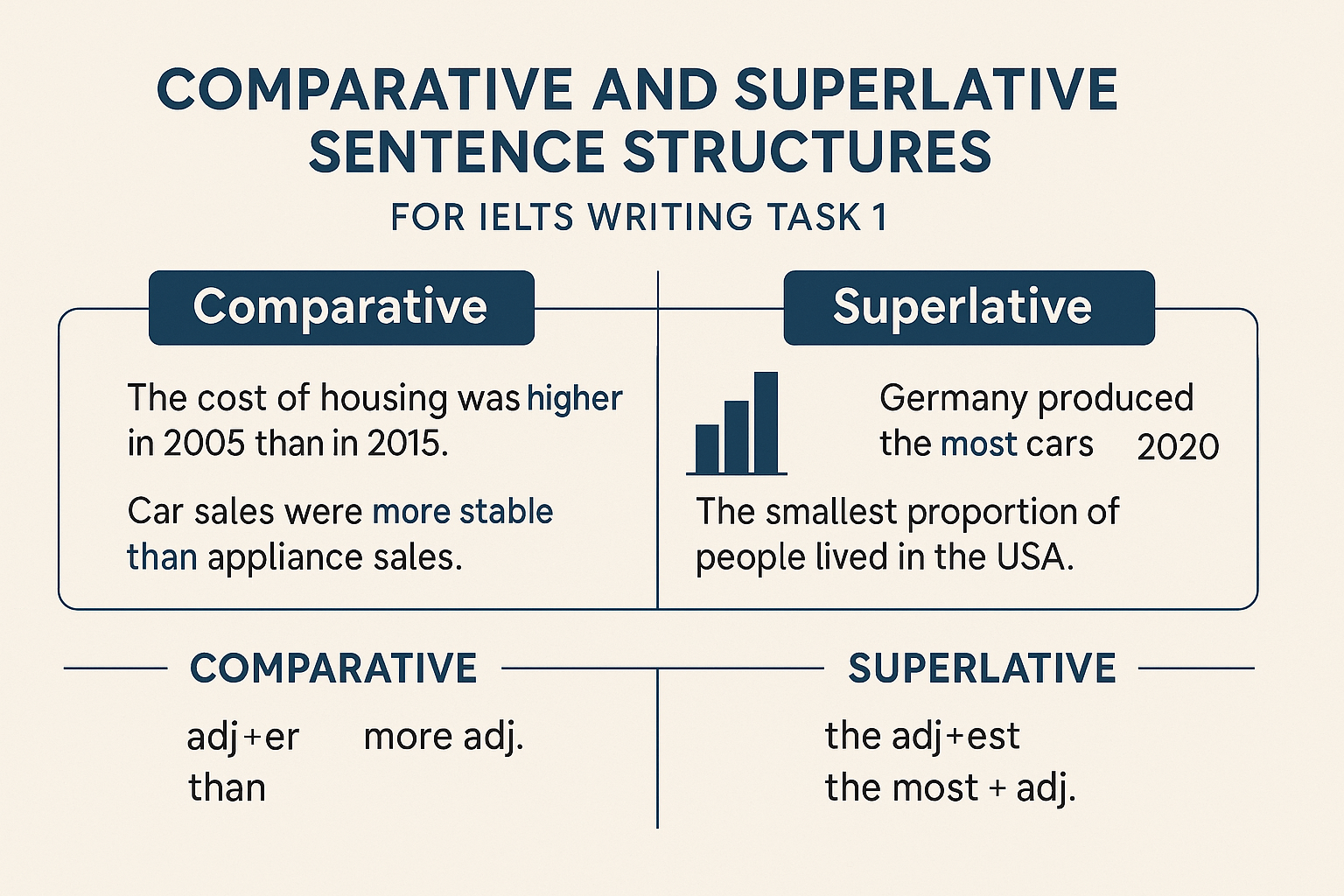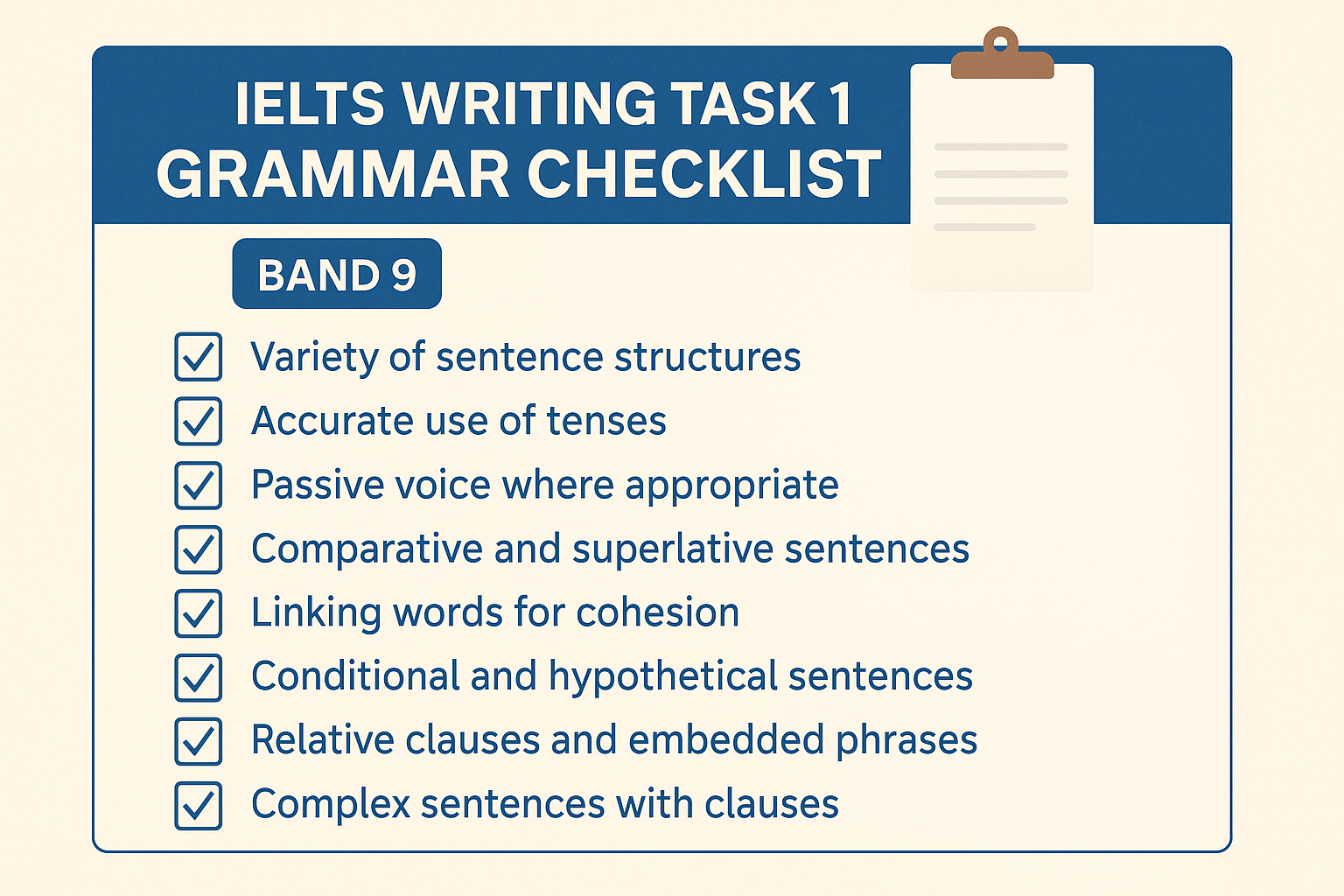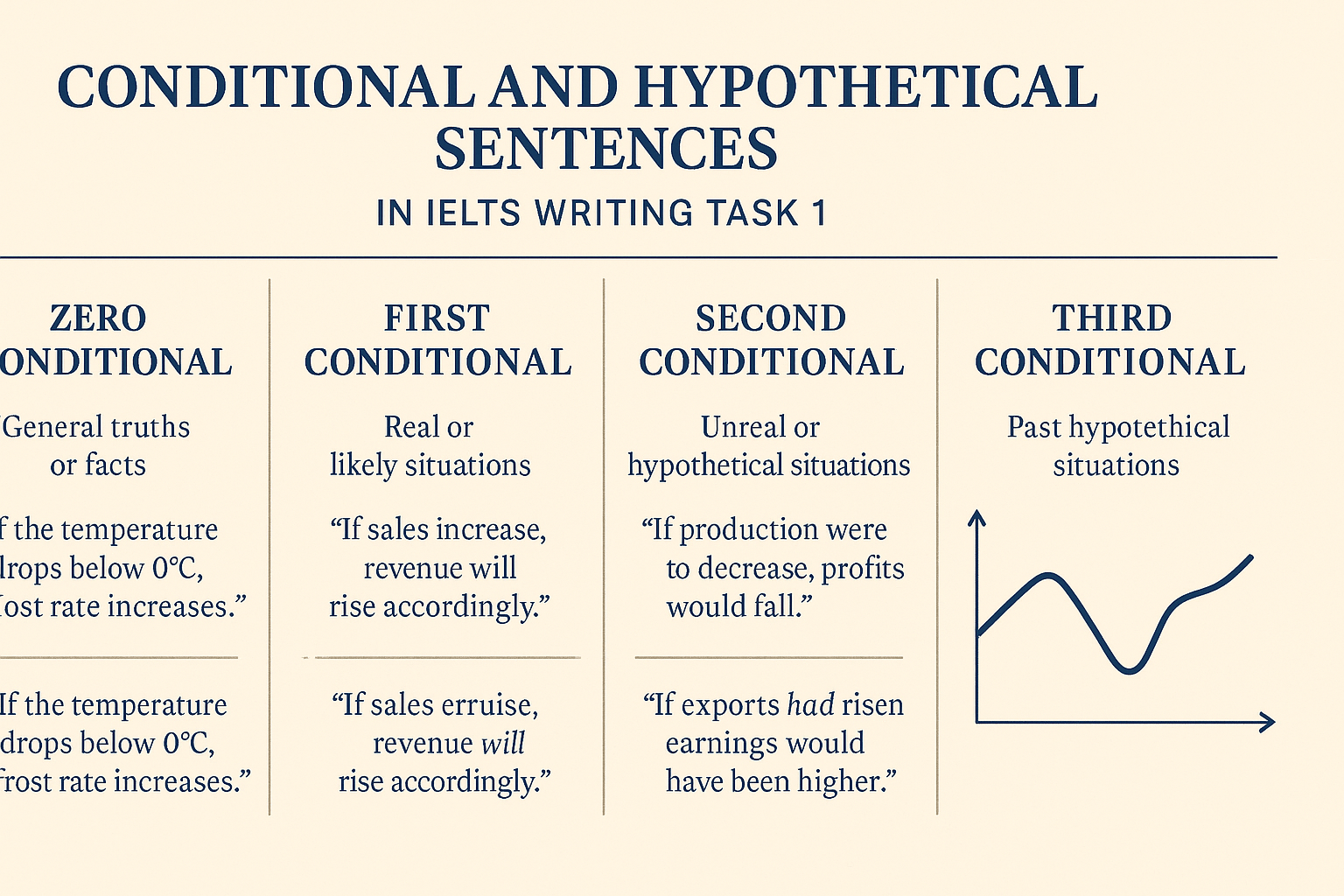- Why Using Comparative Structures Matters in IELTS Writing Task 1
- Understanding IELTS Comparisons Grammar
- How to Use Comparatives Correctly
- How to Use Superlatives Correctly
- Practical Examples of Comparative Sentences IELTS Task 1
- Common Mistakes to Avoid with IELTS Comparisons Grammar
- Tips for Practicing Comparative Structures
- How Comparative Structures Fit into Grammar and Vocabulary Mastery
- Sample Paragraph Using Comparative Structures
- Final Thoughts
When preparing for IELTS Writing Task 1, one of the key skills you need to master is using comparative structures effectively. As an IELTS instructor with years of experience, I’ve seen how using correct IELTS comparisons grammar and well-formed comparative sentences can make your data descriptions clearer, more precise, and help you achieve a higher band score.
In this guide, I’ll explain how to use comparatives and superlatives properly to compare data in your IELTS Task 1 reports. I’ll also provide practical examples and tips to help you avoid common mistakes. For more support, don’t forget to check out my detailed IELTS Writing Task 1 Grammar for Band 7–9 and IELTS Writing Task 1 Vocabulary Complete Guide.
For official materials and practice, visit the IELTS official website, the British Council, or IDP IELTS.
Why Using Comparative Structures Matters in IELTS Writing Task 1
IELTS Writing Task 1 often requires you to compare data points, trends, or categories. Whether you’re describing charts, graphs, or tables, using correct comparative sentences IELTS task 1 shows the examiner you can interpret and explain differences effectively. This is crucial for a high band score.
Incorrect or repetitive comparisons can confuse the reader or make your writing sound basic. Using a range of comparative structures enhances clarity and demonstrates your grammatical range and lexical resource.
Understanding IELTS Comparisons Grammar
Comparative structures are used to show differences or similarities between two or more items. The two main types are:
- Comparatives – comparing two things
- Superlatives – comparing three or more things to show the highest or lowest degree
How to Use Comparatives Correctly
Forming Comparatives
Comparatives are usually formed by:
- Adding -er to short adjectives
Example: higher, faster, larger - Using more before longer adjectives
Example: more significant, more popular
Structure of Comparative Sentences
Common structures include:
- A is + comparative adjective + than + B
Example: City A’s population is larger than City B’s. - A has + comparative + noun + than + B
Example: City A has a higher population than City B. - Using verbs like increase, decrease, grow followed by comparative phrases
Example: Sales increased faster in 2019 than in 2018.
How to Use Superlatives Correctly
Superlatives are used to show the extreme or highest degree among three or more things.
Forming Superlatives
- Add -est to short adjectives
Example: highest, fastest, largest - Use most before longer adjectives
Example: most significant, most popular
Structure of Superlative Sentences
Common forms:
- A is the + superlative adjective + (of/in) + group
Example: City A has the highest population in the region. - A has the + superlative + noun + (of/in) + group
Example: City A has the largest number of residents of all cities.
Practical Examples of Comparative Sentences IELTS Task 1
Example 1: Comparing Two Data Points
The number of visitors to City A was higher than that of City B.
Example 2: Comparing Trends
Sales increased more rapidly in 2020 than in 2019.
Example 3: Using Superlatives
The highest number of tourists visited City C in 2018.
Common Mistakes to Avoid with IELTS Comparisons Grammar
- Mixing comparative and superlative forms incorrectly
Incorrect: City A is more largest than City B.
Correct: City A is larger than City B. - Omitting ‘than’ in comparative sentences
Incorrect: City A is larger City B.
Correct: City A is larger than City B. - Using double comparatives
Incorrect: Sales increased more faster in 2020.
Correct: Sales increased faster in 2020. - Using incorrect adjective forms
Incorrect: City A is more high than City B.
Correct: City A is higher than City B.
Tips for Practicing Comparative Structures
- Identify adjectives in your reading materials and practice forming comparatives and superlatives.
- Rewrite sample sentences switching between simple descriptions and comparative forms.
- Use linking words such as than, compared to, more than, the most to improve sentence cohesion.
- Read official IELTS Writing Task 1 model answers from the British Council or IELTS IDP.
How Comparative Structures Fit into Grammar and Vocabulary Mastery
Using comparative sentences IELTS task 1 correctly is a great way to demonstrate grammatical range. To achieve Band 7 or higher, combine these structures with varied sentence types and precise vocabulary.
For a deep dive into grammar and vocabulary that supports comparisons, explore my guides:
Sample Paragraph Using Comparative Structures
The line graph shows the population growth in three cities between 1990 and 2020. City A’s population was higher than that of City B throughout the period. Sales increased more rapidly in City A after 2005 compared to City C. By 2020, City A had the largest population among the three cities.
Final Thoughts
Mastering IELTS comparisons grammar and using comparative sentences effectively is essential for describing data clearly and accurately in IELTS Writing Task 1. Practice forming comparatives and superlatives correctly, avoid common mistakes, and combine them with rich vocabulary and varied sentence structures.
For additional practice and resources, visit the official IELTS sites linked above and check out my detailed grammar and vocabulary guides. With focused practice, you’ll gain confidence and move closer to your target band score.
Good luck!





One Response
Your blog is a treasure trove of valuable insights and thought-provoking commentary. Your dedication to your craft is evident in every word you write. Keep up the fantastic work!